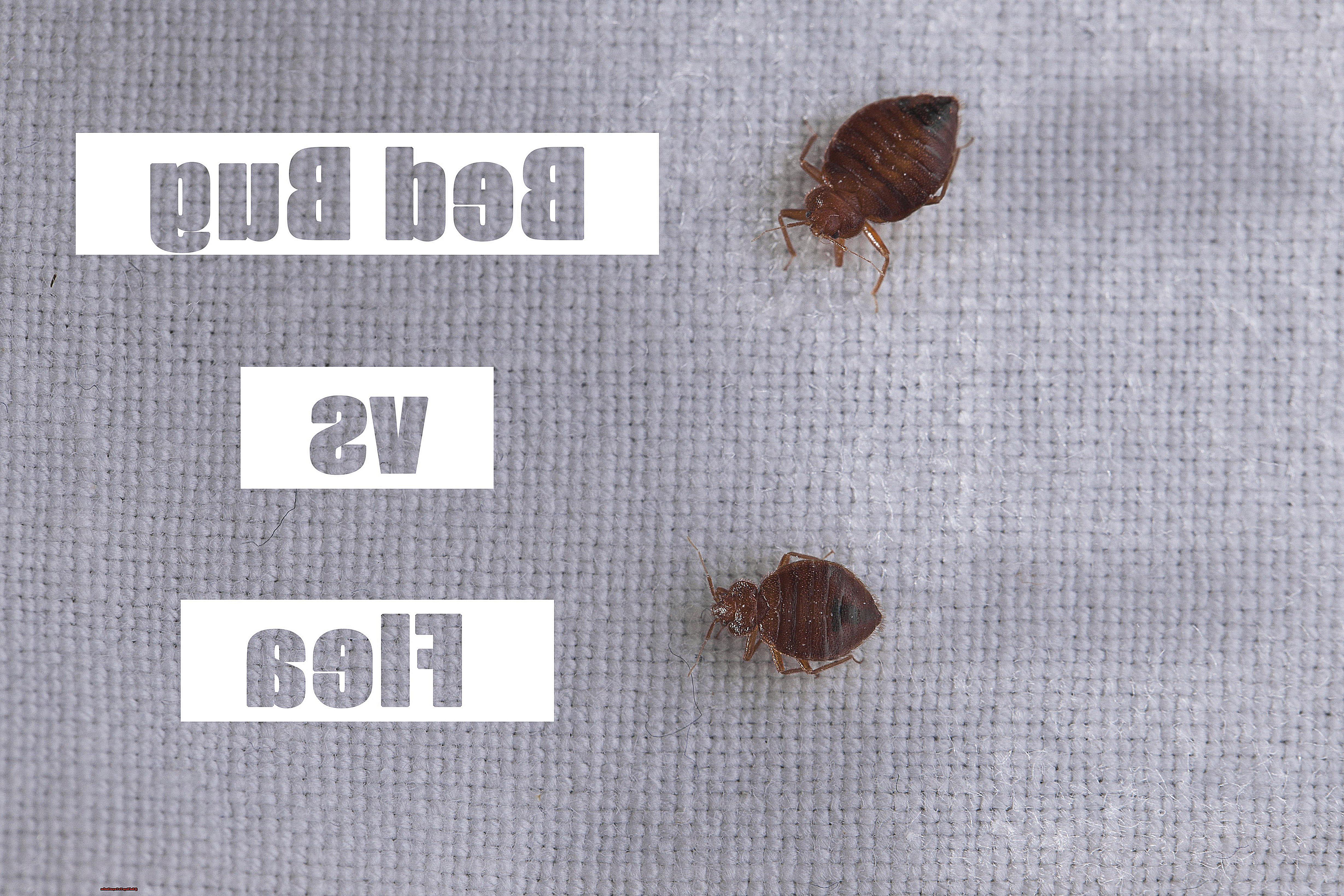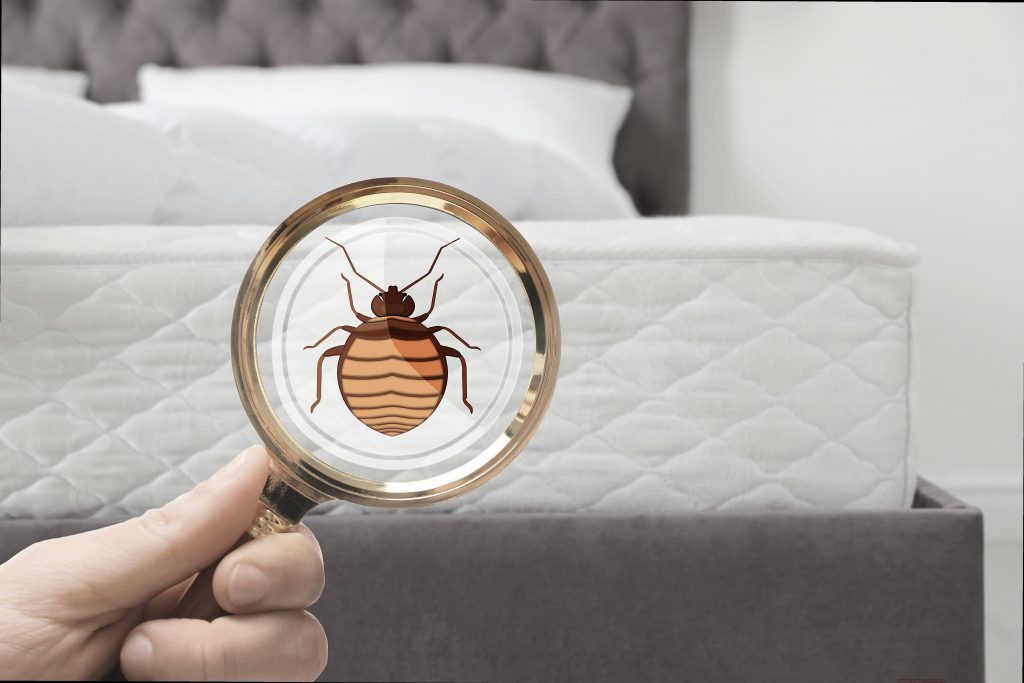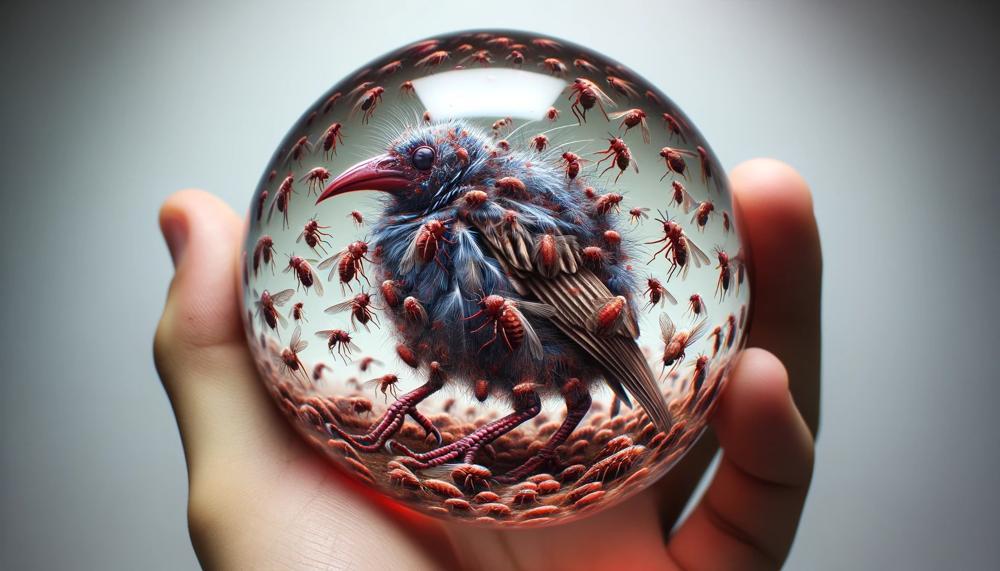Imagine waking up to find itchy red welts all over your body.
Your first thought? Bed bugs.
But before you panic and call an exterminator, consider this – it could be carpet beetles causing the chaos in your home. While these pests may seem similar at first glance, they are actually quite different in terms of behavior and characteristics.
So grab a cup of coffee and let’s dive into the fascinating world of these pesky critters.
Table of Contents
Appearance and Size:
When it comes to pest control, proper identification is paramount. Two common household pests that are often mistaken for each other are bed bugs and carpet beetles. While they may share a similar appearance at first glance, there are crucial differences in their physical traits and behaviors that can help homeowners effectively eradicate these pesky invaders.
Bed bugs, measuring only 5-7mm in length, are small, flat, and reddish-brown insects with a distinctive oval shape. Unlike their larger counterparts, carpet beetles, bed bugs do not have wings and are unable to fly. On the other hand, carpet beetles measure about 2-3mm longer than bed bugs and have an oval-shaped body with a hard exoskeleton, allowing them to take flight.
Aside from size, another noticeable difference between these two pests is their physical appearance. Bed bugs have a translucent appearance, while carpet beetles have a spotted or striped pattern on their shells. Furthermore, bed bugs lack hair on their bodies, while carpet beetles have small bristly hairs.
However, the differences between these pests extend beyond just their appearance. While both feed on organic materials, bed bugs exclusively feed on human blood, leaving red welts on their human hosts’ upper torso. On the other hand, carpet beetles primarily feed on materials like wool or plant fibers and can cause damage to fabrics and carpets. Additionally, bed bugs require human hosts to survive and will often hide in beds or furniture for regular access to food. In contrast, carpet beetles can survive without feeding for extended periods without human assistance.
In conclusion, proper identification is crucial in effectively controlling pest infestations. By understanding the key differences in appearance and behavior between bed bugs and carpet beetles, homeowners can take the necessary steps to eradicate these pests from their homes. While regular cleaning, using scented objects, and placing diatomaceous earth can help control both pests, severe bed bug infestations may require the assistance of a professional exterminator.
Feeding habits:
Carpet beetles and bed bugs, two common household nuisances, have often perplexed homeowners due to their similar names. However, these pests are vastly different in appearance, behavior, and the threats they pose.
The most significant factor that sets these pests apart is their feeding habits. In this section, we will delve into the differences in how carpet beetles and bed bugs feed, equipping homeowners with the knowledge to effectively eliminate these pests from their homes.
Carpet beetles are opportunistic scavengers that feed on natural materials such as wool, silk, cotton, fur, feathers, and even dead insects found in carpets, rugs, clothing, upholstery, and other household items. They do not bite humans but can cause skin irritation in rare cases. In contrast, bed bugs are obligate blood-feeders that require a blood meal to survive and reproduce. These pests exclusively feed on the blood of warm-blooded animals (including humans) at night while their hosts are asleep.
One of the primary reasons for confusion between these pests is their similar appearance. Both are small, oval-shaped insects; carpet beetles measure 1.5 to 4mm in length, while bed bugs are slightly larger at 4 to 5mm with a flattened body. However, carpet beetles come in a variety of colors and patterns such as white, black, brown, and orange scales, while bed bugs have a distinct reddish-brown color.
Their habitats also differ significantly. Carpet beetles can be found both indoors and outdoors as they are attracted to pollen and nectar from flowers. In contrast, bed bugs are strictly indoor pests that can enter homes through luggage or furniture.
Apart from being a nuisance, both pests can cause health concerns. The tiny bristles or hairs on carpet beetle larvae can irritate sensitive skin, while bed bug bites often result in redness, itching, and swelling. Therefore, it is crucial to identify and address infestations of these pests promptly.
Preventing carpet beetle infestations involves keeping the home clean and clutter-free by regularly vacuuming carpets and upholstery and storing fabrics properly. High heat above 50 degrees Celsius can also eliminate them. On the other hand, preventing bed bug infestations requires vigilance when travelling or buying second-hand furniture.
Behaviour and Habitat:
Carpet beetles and bed bugs are two of the most vexing household pests that can wreak havoc on unsuspecting homeowners. Despite their initial similarities, these pests exhibit unique behaviors and inhabit different environments. As a pest control expert, it is essential to grasp these distinctions in order to successfully eradicate them from your abode.
Appearance:
The first observable contrast between carpet beetles and bed bugs lies in their appearance. While bed bugs are minute, flat, and dark brown, carpet beetles possess a small yet sturdy exoskeleton.
Furthermore, carpet beetles come in an array of colors including black, brown, white, and orange. They also feature striking spotted or striped patterns. In contrast, bed bugs are translucent and lack distinctive markings.
Mouth:
Another significant difference between these pests is their mouth structure. Carpet beetles have mouths adapted for consuming plants and fibers, while bed bugs possess specialized mouths that can pierce human and animal skin to access blood. This explains why bed bugs are referred to as blood-sucking insects, while carpet beetles do not feed on their hosts.
Behavior:
The behavior of these pesky creatures also varies greatly. Bed bugs prefer to reside in close proximity to their host, often found in mattresses or other furnishings near the bed. They are most active at night when they feed on their host’s blood while they sleep.
Conversely, carpet beetles do not feed on humans or animals. They prefer to dwell in carpets, clothing, and other areas where they can find materials such as wool, fur, and feathers to munch on.
Size:
Size is another distinguishing factor between carpet beetles and bed bugs. Adult bed bugs are smaller than adult carpet beetles, measuring about 5mm in length compared to the 3-5mm length of adult carpet beetles.
Conclusion:

In conclusion, although both carpet beetles and bed bugs can pose challenges for homeowners, their behaviors and habitats differ significantly. It is crucial to comprehend these variations in order to effectively eradicate them from your dwelling.
Health Risks:
While these tiny pests may seem like a mere nuisance, they can actually pose serious health risks to you and your family. In this article, we will delve deeper into the potential dangers associated with these pests and why it is crucial to address them immediately.
Bed bugs may be small, but their bites can cause significant discomfort and even lead to allergic reactions. These bites often appear as red, itchy welts and can easily be mistaken for mosquito or flea bites. However, unlike fleas and mosquitoes, bed bugs do not transmit diseases through their bites. The real danger lies in the possibility of scratching the bites excessively, which can lead to skin infections that are particularly harmful to young children and those with weakened immune systems.
Aside from their bites, bed bugs can also have a negative impact on mental health. The constant fear of being bitten and the unsettling thought of tiny insects crawling on you while you sleep can cause anxiety, stress, and sleep disturbances. This can significantly affect one’s overall well-being and quality of life.
On the other hand, while carpet beetles do not bite humans, their larvae have tiny hairs that can irritate the skin and cause allergic reactions. These hairs can also become airborne and be inhaled, triggering respiratory issues such as asthma attacks or allergic rhinitis. Additionally, if contaminated food items infested by carpet beetle larvae are consumed, individuals may experience symptoms of food poisoning such as nausea, vomiting, and diarrhea.
But the health risks associated with these pests go beyond physical harm. The mere presence of bed bugs and carpet beetles in a home can also take a toll on one’s mental health. Constantly worrying about these insects and the stress of dealing with an infestation can lead to anxiety, sleep disturbances, and even depression. This can significantly impact a person’s overall well-being and quality of life.
In conclusion, it is crucial not to underestimate the health risks associated with bed bugs and carpet beetles. Though they may be small, they can cause significant harm to humans through their bites, skin irritations, allergies, and mental health issues. Therefore, immediate action must be taken at the first sign of an infestation. Professional pest control services can help eliminate these pests and protect your home and family from potential health risks.
Prevention and Control:
Prevention and Control: Strategies for Managing the Invasion of Bed Bugs and Carpet Beetles in a Household
When it comes to household pests, nothing sends shivers down our spines quite like the infamous bed bugs and carpet beetles. These tiny intruders not only cause physical discomfort with their bites, but they can also lead to allergic reactions and take a toll on our mental well-being.
As an expert in prevention and control, I have curated a list of effective measures to help you deal with these pesky invaders.
Prevention:
As the saying goes, “an ounce of prevention is worth a pound of cure,” and this holds true when it comes to dealing with bed bugs and carpet beetles. Let’s take a look at some preventive measures that can aid in keeping these pests at bay:
Maintain a Clean and Clutter-free Home:
A disorganized home provides countless hiding spots for bed bugs and carpet beetles, making it easier for them to breed and spread. Regularly declutter and vacuum your living space to reduce their potential hiding places.
Thoroughly Inspect Second-hand Furniture and Clothing:
One of the most common ways these pesky invaders enter our homes is through used furniture or clothing. Before bringing them inside, carefully inspect for any signs of infestation.
Seal Cracks and Crevices:
Bed bugs and carpet beetles are masters of sneaking into our homes through the tiniest openings. Conduct a thorough inspection of your walls, baseboards, and furniture for any gaps or crevices, and seal them with caulk to prevent their entry.
Exercise Caution when Traveling:
Bed bugs are notorious hitchhikers and can easily make their way into our homes through our luggage or clothing during our travels. Always check hotel rooms for signs of infestation, and wash all clothes in hot water upon returning home.
Invest in Bed Bug-proof Encasements:
One effective way to prevent an infestation is by investing in bed bug-proof encasements for your mattress and box spring. These encasements make it easier to spot any bed bugs that may be hiding in your bedding.
Control:
If you find yourself already dealing with a bed bug or carpet beetle infestation, do not panic. Here are some effective control strategies to rid your home of these unwanted guests:
Heat Treatment:
Both bed bugs and carpet beetles cannot withstand high temperatures.
Conclusion
In conclusion, while waking up to itchy, red welts may immediately bring bed bugs to mind, it’s important to also consider the possibility of carpet beetles causing chaos in your home. These two pests may seem similar at first glance, but they have distinct differences in behavior and characteristics. It is crucial to properly identify them in order to effectively control infestations, as their feeding habits, appearance, behavior, and habitats vary significantly.
Both bed bugs and carpet beetles can pose health risks through bites, skin irritations, allergies, and even mental health issues. Therefore, prevention is key in keeping these pests at bay. Regular cleaning and decluttering can reduce potential hiding places for these invaders. Additionally, being cautious when traveling and inspecting second-hand furniture or clothing can prevent them from entering your home.
If an infestation does occur, there are effective control strategies such as heat treatment or professional pest control services that can help eliminate these pests from your home. Remember to always seek professional assistance for severe infestations.
In conclusion, by understanding the differences between bed bugs and carpet beetles and implementing preventive measures, we can effectively manage the invasion of these pesky critters in our households. So let’s stay vigilant and keep our homes bug-free.





